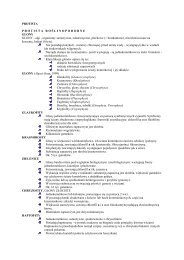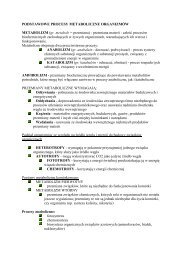Hair Shaft Abnormalities – Clues to Diagnosis and Treatment
Hair Shaft Abnormalities – Clues to Diagnosis and Treatment
Hair Shaft Abnormalities – Clues to Diagnosis and Treatment
Create successful ePaper yourself
Turn your PDF publications into a flip-book with our unique Google optimized e-Paper software.
Table 1. Features of hair shaft diseases<br />
Classifi cation<br />
Acquired or congenital<br />
Exogenous or genetic<br />
Diffuse or localized<br />
Clinical aspect<br />
Dry hair <strong>and</strong> lusterless<br />
Uncombable hair<br />
Fair hair<br />
Breaks easily<br />
<strong>Diagnosis</strong><br />
His<strong>to</strong>ry<br />
Physical examination<br />
Light <strong>and</strong> scanning electron microscopy<br />
Biochemical analysis<br />
Most of the genotrichoses show a Mendelian trait of<br />
inheritance. However, some are non-Mendelian phenotypes<br />
representing lethal mutations surviving only by mosaicism.<br />
These traits may follow paradominant inheritance<br />
as emphasized by Happle <strong>and</strong> König [3] . There are<br />
polygenic <strong>and</strong> monogenic hair disorders. ‘Online Mendelian<br />
inheritance in man’ gives 66 entries for hypotrichosis<br />
<strong>and</strong> 153 entries for alopecia which illustrates the heterogeneity<br />
of the problem.<br />
In the daily work, a clinical classifi cation of alopecia<br />
which also includes hair shaft abnormalities as proposed<br />
by Happle seems reasonable: (1) <strong>to</strong>tal or sub<strong>to</strong>tal absence<br />
of scalp hair in early childhood, (2) more or less diffuse<br />
hypotrichosis that may or may not deteriorate during life<br />
or even diminish, (3) absence of hair in distinctly demarcated<br />
patches or streaks [4] . Complex systemic diseases<br />
may lead <strong>to</strong> typical hair shaft alterations such as trichorrhexis<br />
nodosa, trichorrhexis invaginata <strong>and</strong> trichoschisis<br />
( fi g. 1 , 2 ). <strong>Hair</strong> shaft disorders include ‘uncombable hair’<br />
with a triangular <strong>and</strong> canalicular diameter ( fi g. 3 , 4 ).<br />
64<br />
Embryology <strong>and</strong> Biochemistry of <strong>Hair</strong><br />
<strong>Hair</strong> is an ec<strong>to</strong>dermal structure, <strong>and</strong> its formation is<br />
regulated by master genes important in embryology. The<br />
mammalian hair follicle develops from the epidermis [5] .<br />
The major biochemical components of human hair are<br />
the intermediate fi laments or keratins <strong>and</strong> the keratin-associated<br />
proteins [6] . Keratins belong <strong>to</strong> the superfamily<br />
of proteins that form 8- <strong>to</strong> 10-nm fi laments in the cy<strong>to</strong>plasm<br />
of many epithelial cells. The terminology for human<br />
hair basic keratins is abbreviated internationally as<br />
Derma<strong>to</strong>logy 2005;211:63<strong>–</strong>71<br />
Fig. 1. Trichorrhexis nodosa.<br />
Fig. 2. Trichorrhexis invaginata.<br />
‘hHb’ [7] . Keratin-associated proteins are divided in<strong>to</strong><br />
two groups, high-cyst(e)ine <strong>and</strong> high glycine-tyrosine-rich<br />
polypeptides, according <strong>to</strong> the amino acid composition.<br />
Cyst(e)ine-rich keratins contain high-sulfur (15<strong>–</strong>30%)<br />
proteins <strong>and</strong> ultra-high-sulfur proteins composed of 1 30%<br />
cyst(e)ine residues [8] . A trichohyalin gene is only characterized<br />
in rabbits so far, <strong>and</strong> further work is necessary<br />
<strong>to</strong> unravel the human homologue [9] .<br />
Syndromes with ec<strong>to</strong>dermal malformations often<br />
show altered hair shafts. Almost 200 different entities out<br />
of the spectrum of ec<strong>to</strong>dermal dysplasias are known <strong>to</strong>day.<br />
In many cases of ec<strong>to</strong>dermal <strong>and</strong>/or mesodermal disorders,<br />
the developmental anomalies of other organs predominate<br />
those of the hair.<br />
Itin /Fistarol











